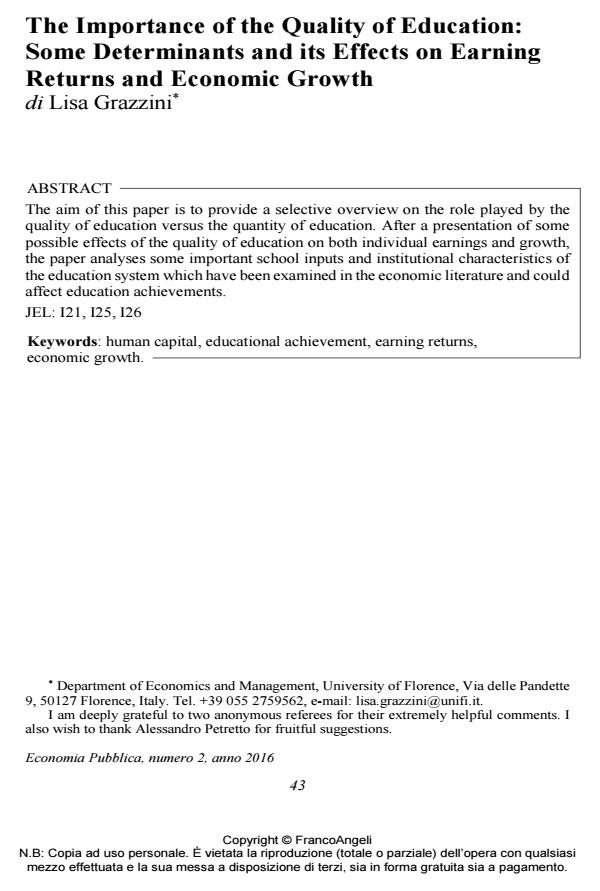The Importance of the Quality of Education: Some Determinants and its Effects on Earning Returns and Economic Growth
Titolo Rivista ECONOMIA PUBBLICA
Autori/Curatori Lisa Grazzini
Anno di pubblicazione 2017 Fascicolo 2016/2
Lingua Inglese Numero pagine 40 P. 43-82 Dimensione file 308 KB
DOI 10.3280/EP2016-002002
Il DOI è il codice a barre della proprietà intellettuale: per saperne di più
clicca qui
Qui sotto puoi vedere in anteprima la prima pagina di questo articolo.
Se questo articolo ti interessa, lo puoi acquistare (e scaricare in formato pdf) seguendo le facili indicazioni per acquistare il download credit. Acquista Download Credits per scaricare questo Articolo in formato PDF

FrancoAngeli è membro della Publishers International Linking Association, Inc (PILA)associazione indipendente e non profit per facilitare (attraverso i servizi tecnologici implementati da CrossRef.org) l’accesso degli studiosi ai contenuti digitali nelle pubblicazioni professionali e scientifiche
The aim of this paper is to provide a selective overview on the role played by the quality of education versus the quantity of education. After a presentation of some possible effects of the quality of education on both individual earnings and growth, the paper analyses some important school inputs and institutional characteristics of the education system which have been examined in the economic literature and could affect education achievements.
Lo scopo di questo lavoro è sottolineare l’importanza del ruolo svolto dalla qualità dell’istruzione rispetto a quello svolto dalla sua quantità. Dopo una presentazione di alcuni possibili effetti della qualità dell’istruzione sulle remunerazioni individuali e sulla crescita economica, il lavoro analizza alcuni importanti fattori che la recente letteratura ha evidenziato come particolarmente rilevanti ai fini dei risultati ottenuti dagli studenti, che riguardano gli input a disposizione delle scuole e, più in generale, le caratteristiche istituzionali del sistema scolastico.
Parole chiave:Capitale umano, Risultati accademici, Rendimenti salariali, Crescita economica
Jel codes:I21, I25, I26
Lisa Grazzini, The Importance of the Quality of Education: Some Determinants and its Effects on Earning Returns and Economic Growth in "ECONOMIA PUBBLICA " 2/2016, pp 43-82, DOI: 10.3280/EP2016-002002